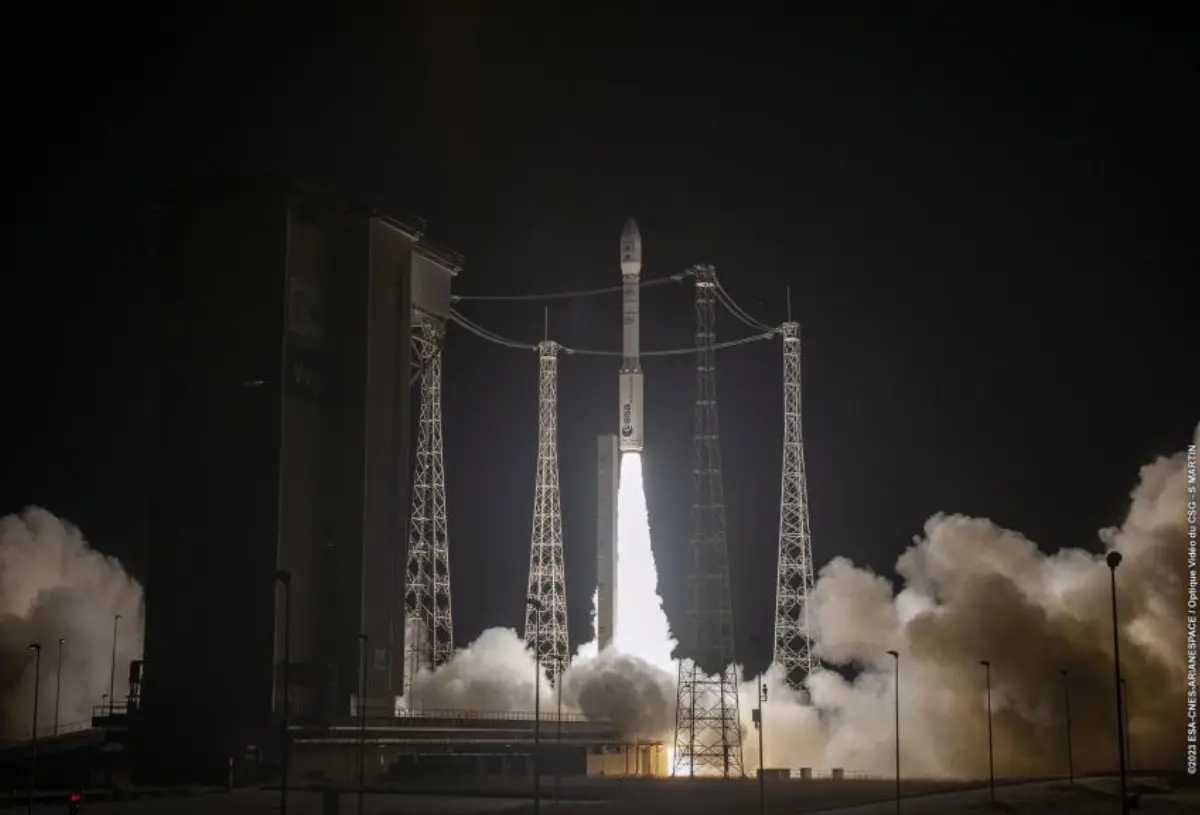
Vega VV23 mission successfully completed
Into orbit two satellites plus ten auxiliary payloads

Vega rocket lifted off from the Guiana Space Centre in French Guiana at 10:36 pm local time (01:36 am UTC) and successfully completed its VV23 flight, placing into sun-synchronous orbit two satellites plus ten auxiliary payloads.
The payload THEOS-2 (Thailand Earth Observation System 2) is a very-high-resolution earth observation optical satellite to support the Kingdom of Thailand’s key development priorities, which has a ground resolution imagery of 0.5 meters.
The payload FORMOSAT-7R/TRITON is an experimental satellite designed and manufactured by the Taiwanese Space Agency (“TASA”) equipped with a Global Navigation Satellite System-Reflectometry (“GNSS-R”) which collects signals reflected by the surface of the oceans, enabling the calculation of wind speeds over it.
Ten auxiliary payloads have been also correctly deployed thanks to the innovative Small Spacecraft Mission Service (“SSMS”) payload dispenser capable to accommodate multiple microsatellites for rideshare services, used for the first time during Vega VV16 flight in September 2020.
After liftoff, Vega flown powered by the first three stages for about six minutes before the separation of the third stage, ZEFIRO 9, from the upper stage. The AVUM upper stage ignited twice before releasing simultaneously the two main satellites. Following two other ignitions of the AVUM, ten cubesats from the auxiliary payload all successfully separated; the confirmation of the separation was acquired for 8 satellites, the separation of the last 2 cubesats is still to be confirmed. The VV23 mission thus ended one hour, 43 minutes and 58 seconds after liftoff. A fifth and last AVUM ignition deorbited the upper stage.
See for details AVIONEWS.
AVIONEWS - World Aeronautical Press Agency